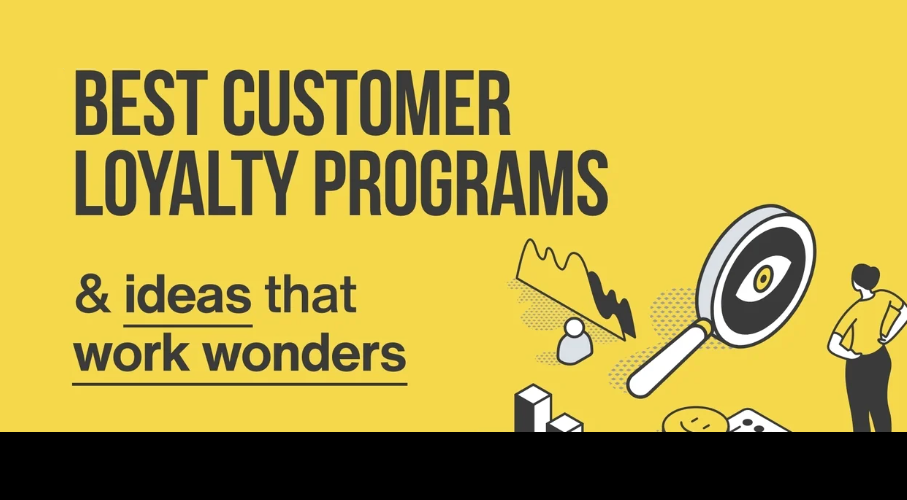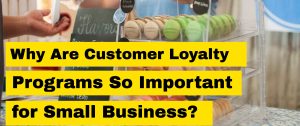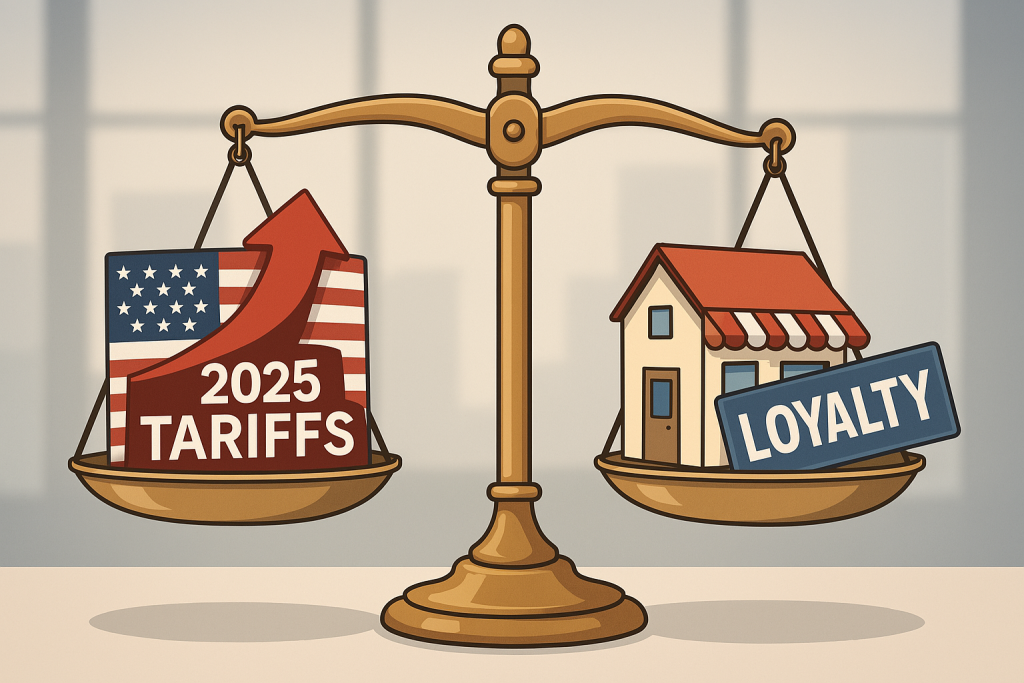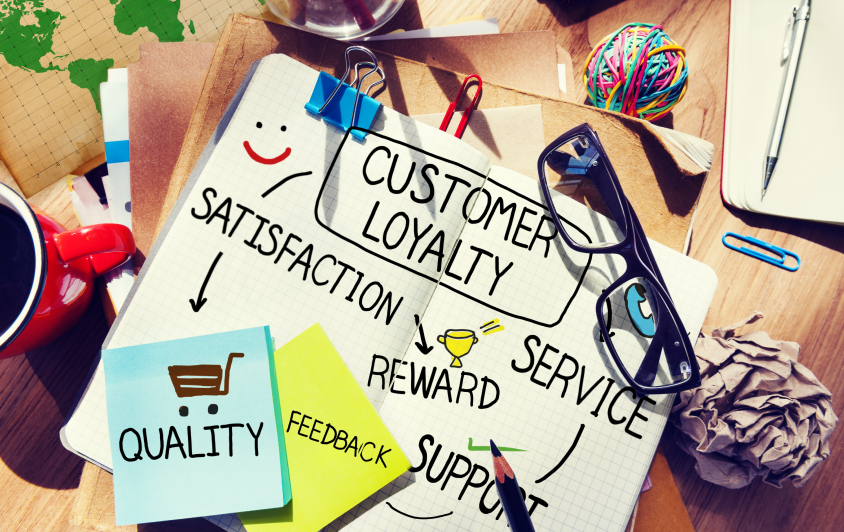Marketing Strategies for Small Businesses

If you operate a small business, then a customer loyalty program could be one of the most cost effective tools available to help you compete against the big box stores. Let’s explore the benefits of a customer loyalty program for small businesses and some of the key marketing strategies that work well. Remember, there are many options when it comes to implementing a loyalty program for your business, but not all options are good options.
Key Marketing Strategies for Small Businesses
- Join Incentives to promote membership growth
- Offering an incentive to join your loyalty program is important as it will help you grow your membership base quickly. Customer’s may be hesitant to take the time to enroll, but if they know they will receive an immediate benefit, they are more likely to be driven by impulse to join and take advantage of that benefit.
- Point system with escalating rewards
- Most if not all loyalty programs will support a points based system. Think of points as a currency of its own. The key to an effective rewards program is to have rewards become more attractive, in terms of cost benefit and desirability, as the cost of those rewards increases.
- Cash back incentives to promote return visits
- Cash back is an alternative loyalty currency to points. It’s often used instead of points but could be used as a supplement too! Sometimes, it’s just simpler to have your program represented in terms of cash discounts on future purchases. “Future” purchases is the key for this kind of scheme. For your customer’s to benefit from the cash discounts they are earning, they must come back in the future to spend that earned cash.
- Digital punch cards
- Many small businesses start out using paper punch cards; your traditional buy 10 get one free type program. This kind of program is largely unsuccessful for these reasons:
- Cards are issues anonymously. There is no data captured as to who the customer is that holds the card.
- Customers often forget their cards and either forgo the earning opportunity or request another punch card, leaving their credits spread across several cards.
- It’s just too easy to fake punches and defraud the system.
- Digital punch cards to the rescue! Punch cards, in concept, are not a bad idea; but they must be managed using a loyalty program. A loyalty program removes all the pitfalls found in traditional paper punch cards, with added benefits of:
- You collect all the necessary, actionable data for marketing.
- Cards are tracked in the system; customers don’t need to carry and present any paper cards.
- Cards may be automatically issued to customers, with controls in place to ensure one card per customer is active at any given time.
- The free item is not confined to be one of the same items purchased. Once the purchase quantity is met, the free item can be anything you want.
- The card does not have to be homogeneous in nature. You can mix and match the product/services, and quantities of each, you want placed on the card.
- Many small businesses start out using paper punch cards; your traditional buy 10 get one free type program. This kind of program is largely unsuccessful for these reasons:
- Gamification strategies to keep your program interesting to consumers
- Mystery Prizes – Based on product purchases. Purchase a product and reveal a mystery code, valid for anything from a future discount, points or gift.
- Instant Win Prizes – Games of chance
- Nth customer to visit wins
- Interactive scratch off games
- Spin-The-Wheel: Random selection
- Raffle drawings – Members receive entries based on visits or spend
- Bonus point days and times – Offering bonus points on slow days
- Membership achievement tiers – Having entry level rewards programs combined with elite level rewards programs is another great way to motivate customers towards doing more business with you! Customers start in the entry level program and, as they year progresses and they meet defined thresholds, they automatically advance into the elite program. Elite program members often receive elevated rewards and earning potential.
- Miss You campaigns to monitor potential lost customers
- Every business suffers from attrition. They key is what steps are you taking to reduce that amount of attrition impacting your business! A loyalty program will monitor your customer’s visit frequency and automatically reach out to those customers, with the goal to get them back in the door.
- First Visit campaigns to motivate first time visitors to return
- A first visit campaign, unlike a join incentive, provides motivation for those new members to return within a set period of time. It gives you the opportunity to reduce attrition by turning more of those one-time shoppers into repeat shoppers.
- Surveys – For collecting valuable feedback on how your doing.
- You can’t fix what you don’t know is broken. Asking your customers is the best way to find out.
Importance of Loyalty for Small Businesses

The cost to acquire new customers is high relative to what it costs to keep, and significantly increase business, from the customers you already have. Some research suggests the cost for new customer acquisition could be 25 times higher!
It’s all about data! Data is king. At their core, the purpose of loyalty programs is to collect marketable data, and exploit that data to increase business. Without actionable data, you are limited as to what you can do. The data you collect will tell you who your customer’s are, their age demographics, how far they travel to see you, how to reach them, how often they shop and what they like to spend their money on. With that power at hand, you can excite your customers, and tease them with targeted promotions that will appeal to them.
Your return on investment (ROI) comes in the way of the increased customer spend you’ll experience, once you allow your loyalty program to absorb and act on the data it collects.
Examples of Loyalty at Work
Starbucks Rewards
The Starbucks Rewards program has been a huge success. Their program has collected actionable data, allowing them to offer relevant perks and communicate with their customers. With points branded as stars, customers earn loyalty currency they can spend on more of their favorite coffee!
DSW Loyalty Program
Designer Shoe Warehouse (DSW) operates a standard VIP loyalty program that rewards its customers with points for each purchase. It’s a flexible program where member’s are known by name or phone number – no loyalty cards are used. A key component behind the success of this loyalty program is personalized email marketing, inclusive of periodic points statements and eligible deals.
Elf Cosmetics
e.l.f operates a tiered loyalty program, called beauty squad. Offering a tiered loyalty program adds “eliteness” to your program. The most loyalty customers receive this special recognition. Higher tiers offer more exclusive rewards!
Conclusion
Small business simply don’t have the resources to engage in expensive marketing, such as television and radio advertising. Fortunately, loyalty programs are affordable for small businesses and they do a fantastic job at filling that void!




One thought on “Marketing Strategies for Small Businesses”
Comments are closed.